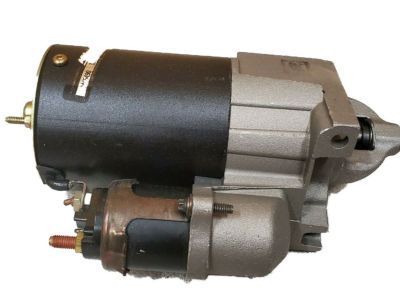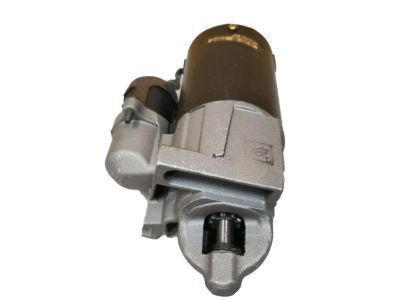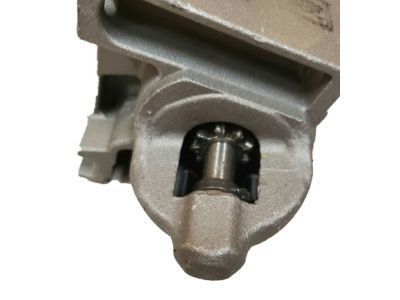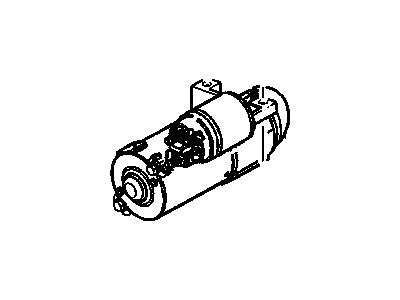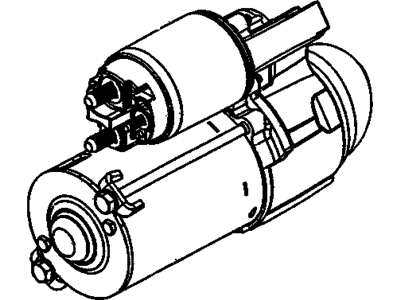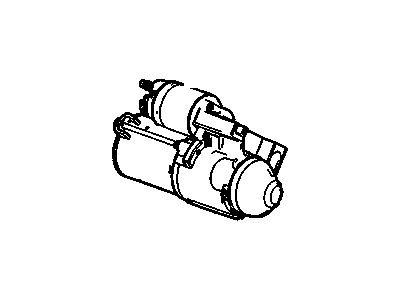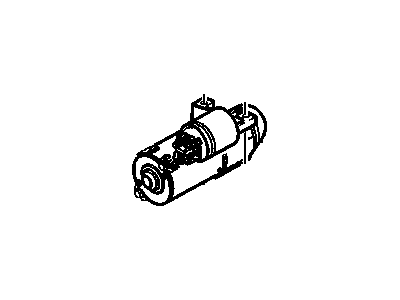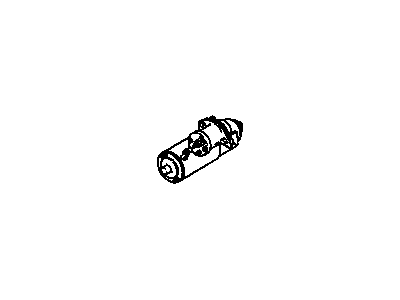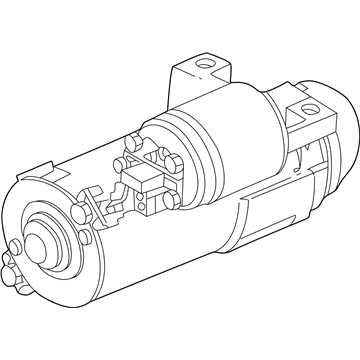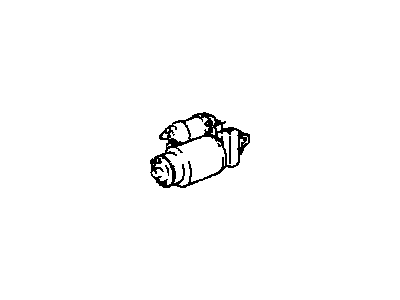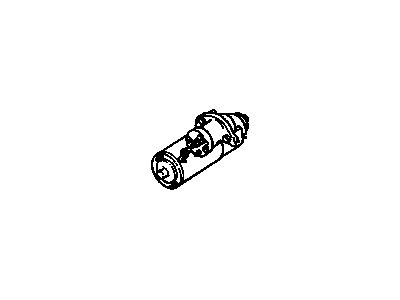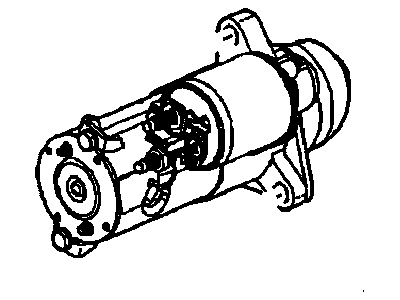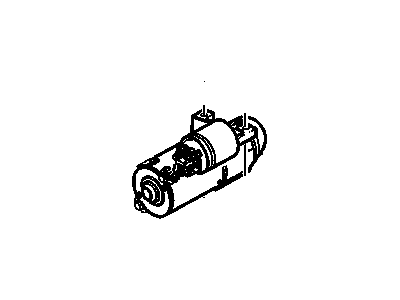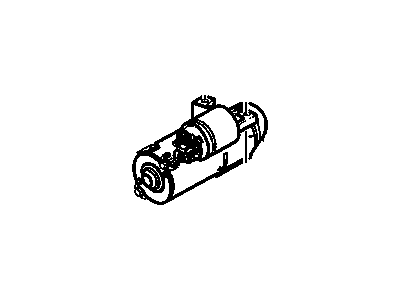
My Garage
My Account
Cart
Genuine Pontiac Grand Prix Starter
Starter Ignition- Select Vehicle by Model
- Select Vehicle by VIN
Select Vehicle by Model
orMake
Model
Year
Select Vehicle by VIN
For the most accurate results, select vehicle by your VIN (Vehicle Identification Number).
21 Starters found
Pontiac Grand Prix Starter, (Remanufacture)
Part Number: 10465490$86.89 MSRP: $263.51You Save: $176.62 (68%)Ships in 1-2 Business DaysPontiac Grand Prix Starter Asm, (Remanufacture Pg260D)
Part Number: 89017714$254.20 MSRP: $504.88You Save: $250.68 (50%)Ships in 1-2 Business DaysPontiac Grand Prix Motor Asm,Start (Remanufacture)
Part Number: 10465459$112.35 MSRP: $339.90You Save: $227.55 (67%)Ships in 1-2 Business DaysPontiac Grand Prix Starter Asm, (Remanufacture) (Pg260D)
Part Number: 89017715$306.88 MSRP: $609.93You Save: $303.05 (50%)Ships in 1-2 Business DaysPontiac Grand Prix Starter Asm, (Remanufacture) (Pg260G)
Part Number: 89017716$219.81 MSRP: $412.96You Save: $193.15 (47%)Ships in 1-2 Business DaysPontiac Grand Prix Motor Asm,Start (Remanufacture) Sd200
Part Number: 10465394$64.64 MSRP: $162.64You Save: $98.00 (61%)Ships in 1-2 Business DaysPontiac Grand Prix Starter, (Remanufacture)
Part Number: 10465102$112.85 MSRP: $212.92You Save: $100.07 (47%)Ships in 1-2 Business DaysPontiac Grand Prix STARTER ASM,.
Part Number: 19418857$203.39 MSRP: $383.78You Save: $180.39 (47%)Ships in 1 Business Day
| Page 1 of 2 |Next >
1-20 of 21 Results
Pontiac Grand Prix Starter
Such an important and delicate part of any automobile is a starter, which is used in Pontiac Grand Prix to start the engine activity by the means of converting electrical energy of the battery into mechanical energy. This process starts when power is applied by turning the ignition key thus getting the starter motor's solenoid engaged. The solenoid, therefore, engages the starter drive gear to the flywheel and this puts the engine into rotation. Pontiac Grand Prix has a gear reduction starter and this is much of an innovation since the armature is provided with a gear reduction system to drive the motor. In the course of its production, many models of the Pontiac Grand Prix have used different types of starters with the common electrical starters comprising features such as solenoids, armatures, field coils, and start drives. All these components in conjunction make certain that the engine cranks properly. The design also has safety switches to ensure that the engine can never start while the car is engaged which has different switches to suit both the automatic and manual transmission cars. For the most part, standard OE starters are adequate for standard applications but for higher quench point and closely toleranced engines such as those put in Pontiac Grand Prix models, one requires a bit better starters. These performance specific starters are very important because they help to reduce problems that may include kick back and failed starters as may be found in high power engine applications.
Each OEM Pontiac Grand Prix Starter we offer is competitively priced and comes with the assurance of the manufacturer's warranty for the part. Furthermore, we guarantee the speedy delivery of your orders right to your doorstep. Our hassle-free return policy is also in place for your peace of mind.
Pontiac Grand Prix Starter Parts Questions & Experts Answers
- Q: How to remove and install a starter motor on Pontiac Grand Prix?A:On some vehicles, it may be necessary to remove the exhaust pipe(s) or frame crossmember to gain access to the starter. In extreme cases it may even be necessary to unbolt the mounts and raise the engine slightly to get the starter out. Detach the negative cable from the battery. Caution: On models equipped with the Theftlock audio system, be sure the lockout feature is turned off before performing any procedure which requires disconnecting the battery. Remove the air cleaner and duct assembly, as necessary. On the 3800, remove the upper mounting bracket, the cooling fan, and the oil cooler lines from the radiator. Raise the vehicle and support it firmly on jackstands. On 3.4 liter, 3800, and 3100 V6 engines with 4T60-E/4T65-E transaxles, remove the flywheel inspection cover. Remove the oil filter splash shield, if necessary. On the 3800, remove the engine harness retainers and position the harness away from the starter. Clearly label, then detach the electrical connectors from the starter. Remove the mounting bolts and nuts (if equipped), then remove the starter. Note the location of any shims used. Installation is the reverse of removal.
- Q: What are some common causes and solutions for starter problems on Pontiac Grand Prix?A:Check that the battery is fully charged before diagnosing starter problems. If the starter does not turn at all when the switch is operated, verify if the shift lever is in Neutral or Park (automatic transmission) or if the clutch pedal is depressed (manual transmission). Make sure that both cables at the battery and Starter Solenoid terminals are clean and secure, and also ensure that the battery is charged. When the starter spins but the engine doesn't crank, it means that overrunning clutch inside it has slipped and hence requires replacement of the starter. When you hear a clicking sound from the solenoid but nothing happens with the starter, then it could be due to a faulty battery, main solenoid contacts, the whole starter itself, or else a seized engine. In case you cannot hear any sound from the solenoid plunger while switching it on, indicating that your solenoid may be bad due to a burned fusible link, defective solenoid, or dead battery. To test this solenoid, connect a jumper lead between the positive (+) terminal of the battery and the ignition switch wire terminal on it. The start operating end shows its condition as normal if it operates well there since this confirms that either the ignition switch should be worked on, the neutral start switch needs repairs, or a wiring problem has occurred. If this happens then remove the assembly of starter/solenoid for dissection; testing (with) repair purposes. If the starter cranks very slowly make sure that your terminals are tight, and check to see whether the battery is charged. It may crank slowly if the engine is partially seized or has the wrong viscosity oil. To test the starting motor, run the engine until normal operating temperature is reached, disconnect the coil wire from the distributor cap running to ground on the engine. Connecting a voltmeter positive lead to the positive battery post joining the negative lead to the negative post. Crank the engine and take voltmeter readings as soon as a steady figure is indicated, not exceeding 15 seconds of the starter turning. A reading of 9 volts or more at normal cranking speed is normal, indicating a faulty Starter if the cranking speed is slow. If the reading is less than 9 volts and the cranking speed is slow, it could indicate burned solenoid contacts, a bad starter, discharged battery, or a bad connection.
Related Pontiac Grand Prix Parts
Browse by Year
2008 Starter 2007 Starter 2006 Starter 2005 Starter 2004 Starter 2003 Starter 2002 Starter 2001 Starter 2000 Starter 1999 Starter 1998 Starter 1997 Starter 1996 Starter 1995 Starter 1994 Starter 1993 Starter 1992 Starter 1991 Starter 1990 Starter 1989 Starter 1988 Starter 1987 Starter 1986 Starter 1985 Starter 1984 Starter 1983 Starter 1982 Starter
